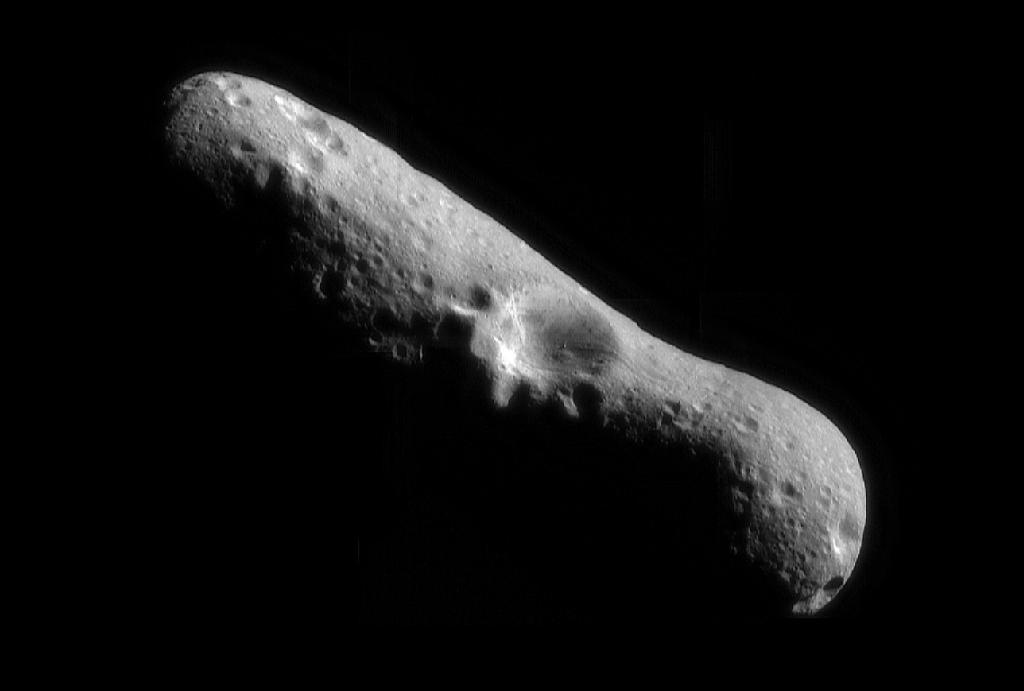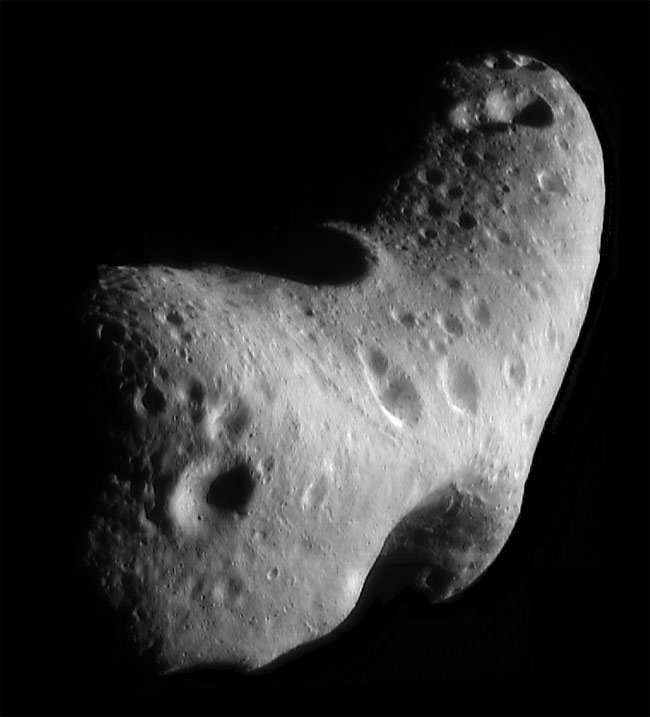Space Rock of Love: Asteroid Eros Attracts Skywatchers in Earth Flyby

In 1931, the close approach of the asteroid Eros allowed professional astronomers to calculate its distance and make that era's most accurate measurement of the solar system. As the asteroid passes near Earth this week, amateur astronomers and students from around the world seek to recreate the historical experience.
Today's technology allows for much more precise methods of measuring the distance to planets and other orbiting bodies. It can make it easy to forget how challenging astronomy was long ago.
"Hundreds of years ago, scientists were sent out on long expeditions around the world in order to observe a rare astronomical event," Michael Richmond, of the Rochester Institute of Technology, told SPACE.com.
"They had lots of adventures — it was sort of a romantic thing. They go off into the wilderness and set up an observatory in the middle of nowhere, and then they have to fight their way back," he said.
One important event was the close approach of the asteroid Eros in 1931. Astronomers in Germany, Algiers, Johannesburg, Tokyo and California captured photographs of the asteroid against the background of stars. [Closeup Photos of Asteroid Eros]
"It really was a worldwide effort," Richmond said.
By comparing images taken at the same time but from different locations, they could use trigonometry to determine exactly how far away the asteroid passed. From this, they could calculate the distance to other planets, taking the best measurement of the bodies orbiting the sun.
Get the Space.com Newsletter
Breaking space news, the latest updates on rocket launches, skywatching events and more!
"It was a small milestone in solar system astronomy," Richmond said.
More contemporarily, Richmond provided technical assistance to Steven van Roode, a physics teacher and amateur astronomer in the Netherlands who set up a website to chronicle Eros' close approach. Visitors from around the world can upload their images as the Earth passes between the asteroid and the sun this week, and use them to recalculate just how far away Eros travels.
Richmond calls van Roode's project "an opportunity for students and amateur astronomers to recreate what was, 80 years ago, an important step in solar system research."

Telescopes instead of muskets
In 2004, Venus passed between the Earth and the sun for the first time in 122 years. These rare transits occur in pairs, and the second one will take place in June. As with Eros, these events can allow astronomers to calculate the size of the solar system.
"One of the people who was most interested in encouraging students to do this project ... was Steven van Roode," Richmond said.
"He noticed that, in addition to this transit of Venus occurring in 2012, there was another rare astronomical event that was … going to occur this year" — the opposition of Eros.
Discovered in 1898, Eros is one of the larger near-Earth asteroids, at only 20 miles (33 kilometers) wide. It was visited by NASA's Near Earth Asteroid Rendezvous in 2000.
On Jan. 31, 2012, it made its closest approach to Earth, passing only 16.6 million miles (26.7 km) from the planet, or 20 times the distance to the moon.
Richmond was quick to point out that the asteroid posed no threat to the planet.
"It's not in any way dangerous," he said.
Stargazers should turn their eyes to the constellations of Leo, Sextans and Hydra to glimpse this rare visitor. If you don't have a telescope, a pair of binoculars should make it clear. The asteroid will travel a little farther than the diameter of the moon, so a patient observer will see it move over several hours.
After reaching its brightest from Jan. 25 to Feb. 13, Eros will begin to dim on Valentine's Day.
Because the asteroid is so far away, the window of opportunity is very broad. Van Roode's website collects and compares data from Jan. 28 to Feb. 3, when Eros makes its nearest pass. However, Richmond says that you could still use the tools to calculate distances as late as the middle of February, assuming you had a partner taking pictures at the same time.
Using van Roode's website, visitors can use online software to determine a precise distance to the asteroid.
Although modern radar provides more-accurate data, Richmond stresses that the point of the project is that students and astronomers can measure the size of the solar system for themselves.
"It's like people who recreate Civil War battles," he said. "They're not teaching historians about the battle, but they're having a lot of fun, and they're learning something ... for their own sake."
And there's something to be said about sharing a connection for the skywatcher pioneers of yesteryear, Richmond added.
"We're historical re-enactors of astronomy."
Visit the Eros and the Solar Parallax Project to participate in this historical recreation and help measure the size of the solar system for yourself.
Join our Space Forums to keep talking space on the latest missions, night sky and more! And if you have a news tip, correction or comment, let us know at: community@space.com.

Nola Taylor Tillman is a contributing writer for Space.com. She loves all things space and astronomy-related, and enjoys the opportunity to learn more. She has a Bachelor’s degree in English and Astrophysics from Agnes Scott college and served as an intern at Sky & Telescope magazine. In her free time, she homeschools her four children. Follow her on Twitter at @NolaTRedd









